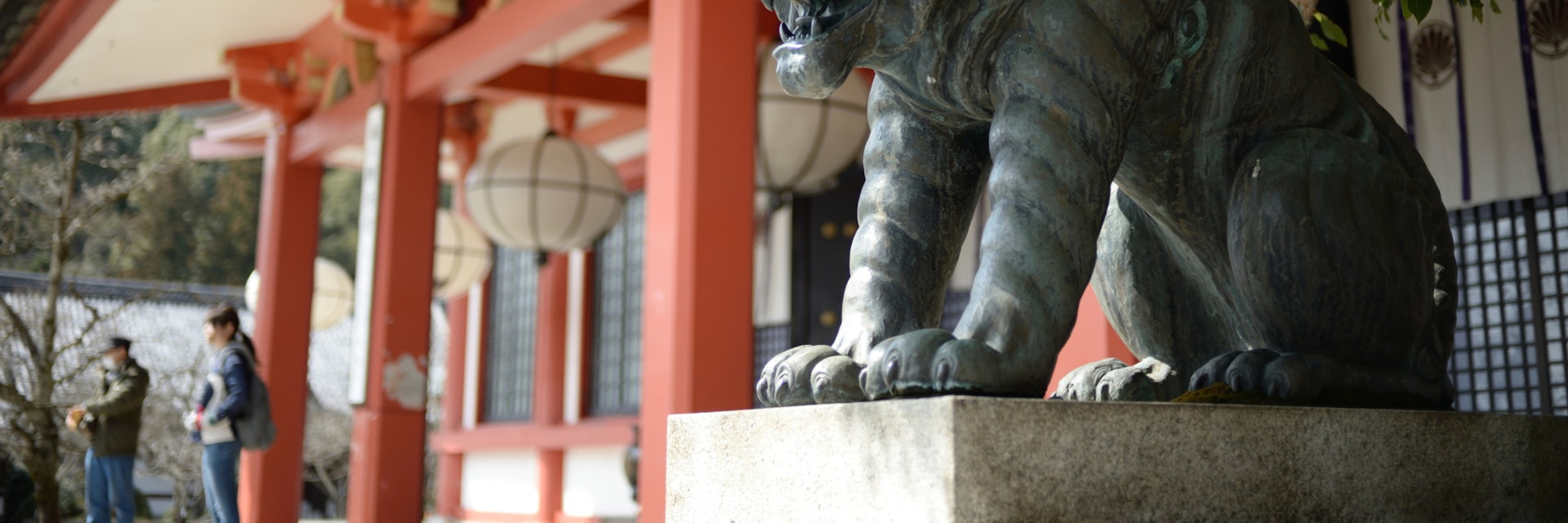Located high on a thickly wooded mountain, Kurama-dera is one of the few temples in modern Japan that manages to retain an air of real spirituality. This magical place gains much of its power from its brilliant natural setting. The entrance to the temple is just up the hill from Kurama Station. A cable car runs to/from the top (¥200 each way), or you can hike up in about 30 minutes (follow the path past the tram station).
The temple also has a fascinating history: in 770 the monk Gantei left Nara’s Toshōdai-ji in search of a wilderness sanctuary in which to meditate. Wandering in the hills north of Kyoto, he came across a white horse that led him to the valley known today as Kurama. After seeing a vision of the deity Bishamon-ten, guardian of the northern quarter of the Buddhist heaven, Gantei established Kurama-dera just below the peak of Kurama-yama. Originally belonging to the Tendai school of Buddhism, Kurama has been independent since 1949, describing its own brand of Buddhism as Kurama-kyō.
It's worth walking up the trail from the main entrance (if it’s not too hot), since it winds through a forest of towering old-growth cryptomeria trees, passing by Yuki-jinja, a small Shintō shrine, on the way. Near the peak, there is a courtyard dominated by the Honden (Main Hall); behind this a trail leads off to the mountain’s peak.
At the top, you can take a brief detour across the ridge to Ōsugi-gongen, a quiet shrine in a grove of trees. Those who want to continue to Kibune can take the trail down the other side. It’s a 1.2km, 30-minute hike from the Honden to the valley floor of Kibune. On the way down are two mountain shrines, Sōjō-ga-dani Fudō-dō and Okuno-in Maō-den, which make pleasant rest stops.








